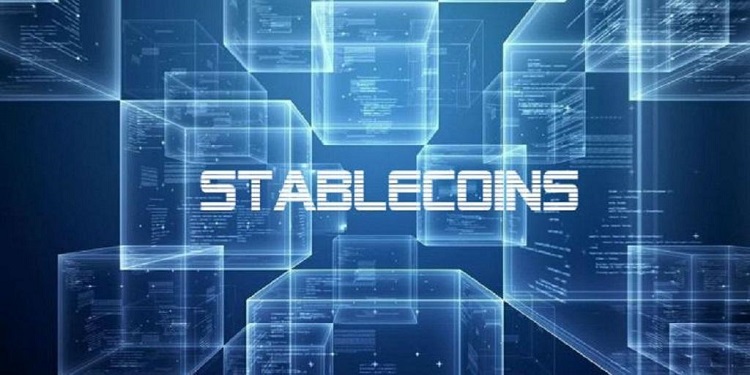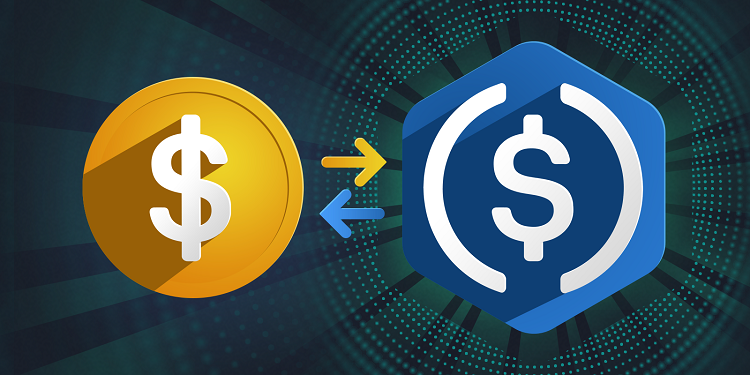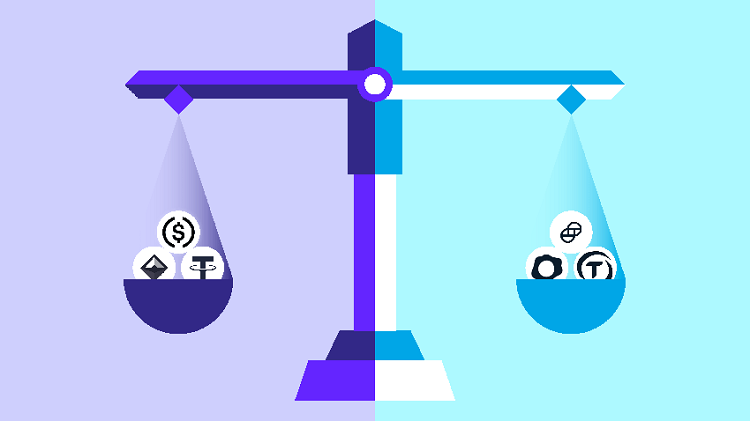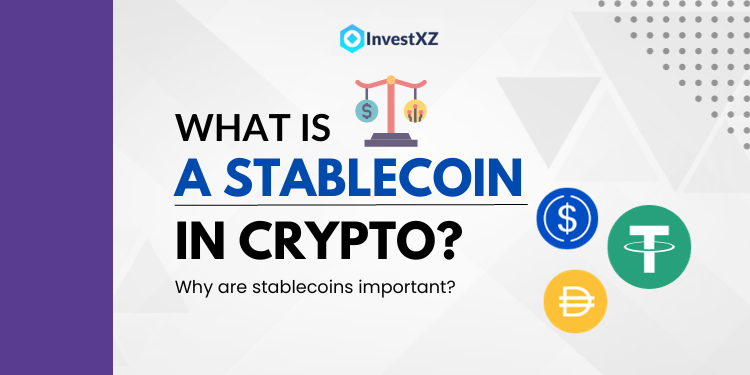What is a Stablecoin is a term quite familiar and searched a lot in the Cryptocurrency market. However, do you really understand the nature of Stablecoin, as well as its advantages and disadvantages, how it works, etc.? This article will provide you with the most detailed information about Stablecoin.
Contents
What is a Stablecoin in crypto?
What is a Stablecoin?
-
Bitcoin is the first blockchain idea with limited and decentralized features
-
ETH is the second creative blockchain with the smart contract idea
-
Stable coin is the third breakthrough idea of blockchain
USDT is the first and most popular. However, recently two other stablecoins have also grown rapidly and may compete with or surpass USDT in the future, namely USDC and BUSD.
Why are stablecoins safe?
There are many forms of stablecoin, but people always think of backed stablecoins when talking about it.
In theory, for every stablecoin token created, the issuing organization will deposit an equivalent amount of money into a bank. Every USDT, USDC, BUSD is backed by exactly that amount of money. The market capitalization of these digital currencies is equivalent to the amount of money held in reserve by the issuing organization in the bank.
So far, no stablecoin has been a scam, but occasionally we see FUD or rumors about the backed money of Tether – the largest stablecoin. But so far, everything is still fine.
However, in front of a 65 billion dollar cash pile, we are also not so sure about “someone” suddenly changing. This is the critical weakness of stablecoin compared to Bitcoin: Dependency on other people/organizations.

The Role of Stablecoin in the Cryptocurrency Market
What is the function of Stablecoin? With the strong volatility of the Cryptocurrency market, you cannot predict the value of each Coin. Therefore, it can cause a very large difference in value. That’s why the emergence of Stablecoin aims to help protect the value of investors’ assets safely and effectively in the volatile Crypto market, without having to convert to cash or switch to another form of investment.

Advantages and Disadvantages of Stablecoin
To understand more about what is a Stablecoin, let’s analyze the advantages and disadvantages of this currency.
Advantages of Stablecoin:
- The characteristic of Stablecoin is its stability in value. Therefore, it will help optimally protect your assets, when the market is in a downtrend or when you want to send it to someone else.
- Easy to perform transactions around the world, without going through any intermediaries or banks.
- Buying and selling Stablecoin does not require intermediaries, so transaction fees are very low and the transfer time is also faster. Usually, each transaction only takes a few minutes to complete.
- Used as a common means of payment, thanks to price stability.

Disadvantages of Stablecoin:
- Most Stablecoins are dominated by organizations that control the issuance and supply. This is the “centralized” nature of stablecoin. Occasionally, we witness Tether Fud (USDT FUD) related to the transparency and safety of Tether’s backed assets.
- Due to its attachment to the value of Fiat currency, Stablecoin is also affected by inflation or global changes.
Types of Stablecoins
What is a Stablecoin and what types are there? Stablecoins are a category of cryptocurrency that aims to minimize price volatility, typically by being pegged to stable assets such as fiat currencies, commodities, or other cryptocurrencies. Here are some prevalent types of stablecoins:
- Fiat-Collateralized Stablecoins: These stablecoins are backed by fiat currencies like the USD, EUR, or GBP. Each stablecoin issued has an equivalent fiat currency reserve. Examples include Tether (USDT), TrueUSD (TUSD), and Paxos Standard (PAX).
- Crypto-Collateralized Stablecoins: Backed by other cryptocurrencies. Due to the volatility of the reserve cryptocurrency, these stablecoins are often over-collateralized to buffer price changes. Dai (DAI), backed by Ethereum, is an example.
- Commodity-Collateralized Stablecoins: These are supported by commodities such as gold, silver, or oil. For example, each Pax Gold (PAXG) token represents one fine troy ounce of a gold bar in custody.
- Algorithmic Stablecoins: Differing from other types, these stablecoins are not asset-backed but use algorithms and smart contracts to regulate the token supply and stabilize the price. TerraUSD (UST) and Ampleforth (AMPL) are examples.
- Hybrid Stablecoins: These merge elements from the aforementioned categories, possibly using a mix of fiat, crypto assets, and algorithms for price stability.
Each type presents its own set of advantages and challenges, particularly regarding the balance between decentralization and stability.
Top and Most Reliable Stablecoins Currently
Below is a list of the leading stablecoins, ranked by total market capitalization:
Should You Invest in Stablecoins?
The answer is no. Stablecoins don’t increase in value (though they can be staked). But to call it an investment in this cryptocurrency is not quite accurate:
It’s always like that. However, there is still a way to invest in stablecoins when the market is stable and sell them during a market panic sell, as the demand for stablecoins to bottom-fish increases.
With the article What is a Stablecoin, you will have a better understanding of this cryptocurrency product. And of course, in the process of investing in coins, this cryptocurrencies are essential when we take profits or adjust the proportion of coin holdings.


























